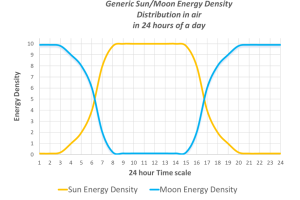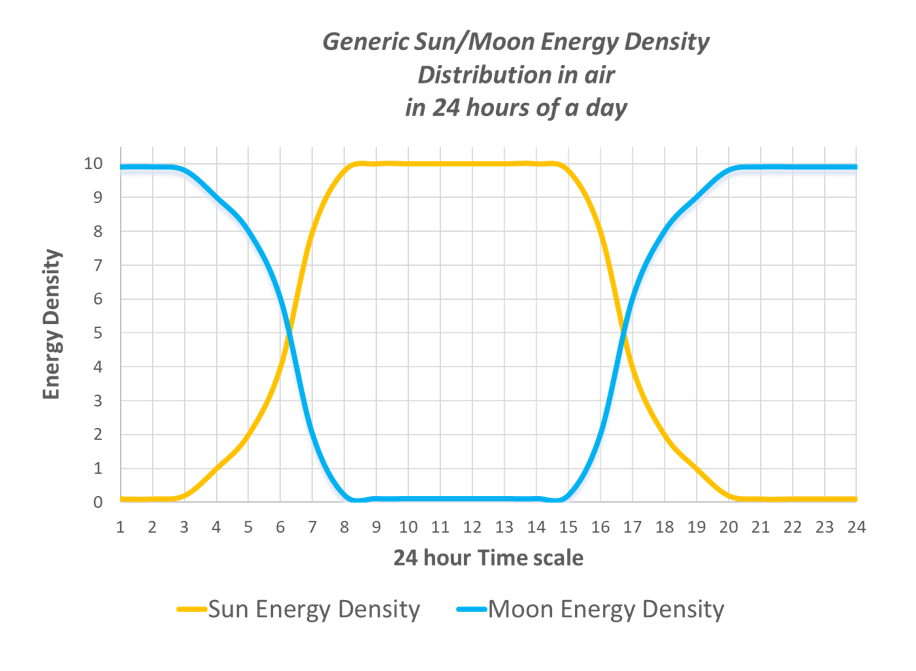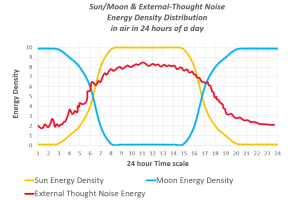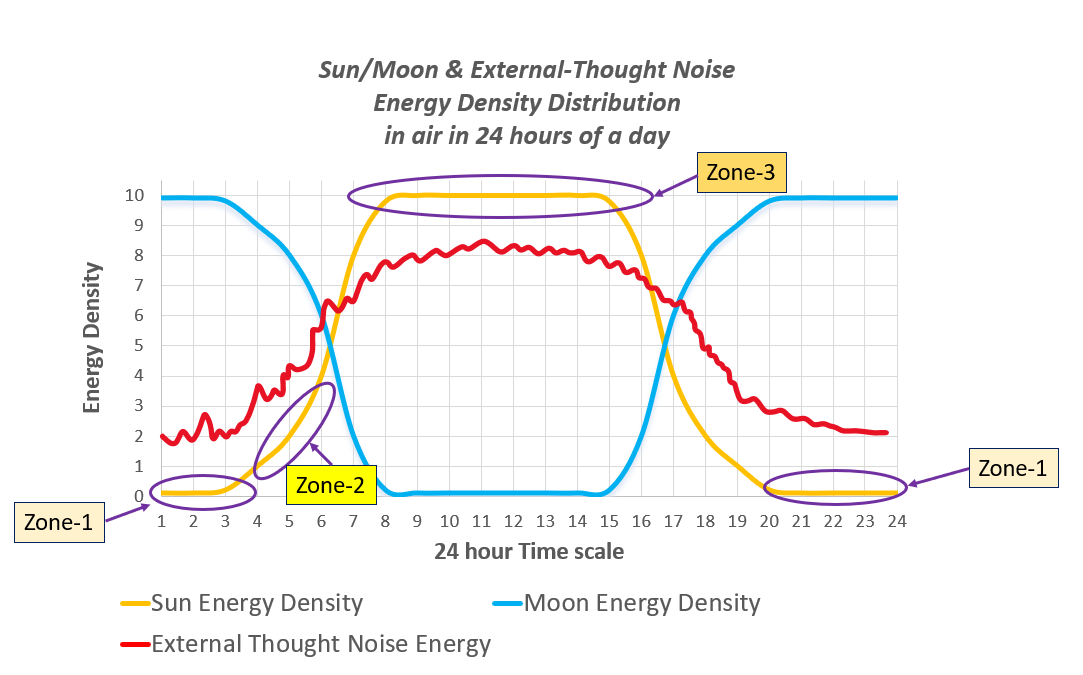Tools for inSelf Yoga Series- 3: Sun/ Moon & External thoughts/ noise Energy variation within a day
Even though they are analytical, some of the genres are interlinked. Eg: Nadi, Chakra, Kundalini, Higher conscious states → all are linked.
This is the master database of all Tools for the inSelf Yoga Series
Keynote:
Irrespective of the weather conditions and sun-moon energy combination, one has to practice consistently through all the phases of up and down.
These are just tools or map guides to give a practitioner what to expect down the road, one has no control to change anything down the lane than to adapt to it and to get the best out of it.
There are several internal and external factors that influence the psyche toward breath infusion practice and meditation.
Here in this and the coming post, we will see the external factors.
- Sun Energy
- Sunny days & summer increase the sun energy in the air
- Energizes the subtle body and helps in raising kundalini to take the subtle body to higher dimensions
- Moon Energy
- Windy and rainy days increase the moon's energy in the air
- Moon energy increases the sluggish energy in the psyche, one tends to be lethargic or sleepy
- Remember during some rainy, cloudy days, all the family members might like to get up late or sleep in the afternoon instead of working, that's due to the high moon energy in the air.
- Makes the subtle body dense and keeps the subtle body floating around earth dimensions,
- External-Thought Noise Energy
- Proximity to urban places has high noise or thoughts chattering energy from others in the air
- Forest or remote villages generally have lower thought or noise energy
- The karmic energy of each person decides his location of dwelling, one cannot choose this
All these are completely out of the practitioner's hands, one cannot control the climate and the
External Factors that influence Breath infusion practice:
- The higher the Sun Energy in the air, it is easier to raise Kundalini using breath Infusion Practice
- The higher the moon's energy in the air, it is difficult to raise Kundalini using breath Infusion Practice, which can induce the sluggish energy
- The higher the External-Thought Noise Energy in the environment, it is difficult during mediation, as the thoughts of several people can attach to the mind of the practitioner.



Several Time Zones:
- Zone 1: 10 pm - 3 am: Sleep Time
- Low Sun Energy → Difficult to Rise Kundalini
- High Moon Energy → Sluggish energy preventing one from practice
- Low External-Thought Noise Energy → Very low thoughts from others during mediation
- Zone 2: 3 am - 6:30 am: Optimal Time for Practice, recommended by siddhas
- Increasing Sun Energy → Kundalini rise is possible, provided enough sun energy is present in air
- Decreasing Moon Energy → Level of Sluggish energy induces sleep density
- Relatively Low External-Thought Noise Energy → Very low thoughts from others during mediation
- The subtle body tends to indulge in non-yogic pursuits with fellow friends & relatives during this time zone
- This is the time zone when Siddhas or deities roam astrally around to instruct the students on yogic practices
- Zone 3: 6:30 am - 4:30 pm: Highest Sun Energy, Good for Kundalini yoga but bad for meditation
- Highest Sun Energy → Kundalini rise is easiest. Several kundalini rises can be practiced in this time zone
- No Moon Energy → No sleep or very less sluggish energy
- Relatively Low External-Thought Noise Energy → Very High thoughts from others during mediation
- Subtle body and psyche is attacked by contact thoughts and obligation from others
- Challenging time to practice as the obligation energy can weigh and obstruct the practice.
Trade-off
Time Zone 3: It is a trade-off between each time zones. In the peak hours (time zone-3) where sun energy is highest, the kundalini rise will happen throughout the body, even if walk or take a step but mediation can be a big challenge.
Time Zone 1: Whereas in time zone 1, it can challenging to raise kundalini time even after some time. But mediation will not be interrupted by other thoughts, but without kundalini rise, mediation will be of lower quality.
Time Zone 2: It is the optimal time when we may have the optimal sun energy to raise the kundalini (sometime, it is not enough) and mediation can be of less hindrance from other's thoughts. But getting up at this time itself is a big challenge.
So, each time zone has its benefits and required challenges, one has to trade off according to their psyche and achieve the best results from their practice.
All these results are for the outside environment.
Conclusion:
From these graphs, one can understand how external factors play a role on a normal day.
If it rains and is cloudy during the daytime, solar energy will be blocked by the clouds and the air will be filled with moon energy inducing us the sleep, in that case, the graph will look different than what is shown.
This is a generic case, which shows the energy density distribution throughout the day in 24 hours.
One may not be able to control the climate and externals, but one can expect what results and obstacles one may experience during these time zones. I myself have had several exceptions in different time zones from what I have shown below, but still, on average this graph will hold good, and give a glimpse of how the factors play out.
In an Indoor environment, one can raise kundalini even at night, because the solar energy is stored inside the room, the air inside the room is not subjected to such high fluctuations as outside and the grade of air is not going to be fresh as outside.
In the coming posts, I explain on inside and outside environments play a role in practice.
It is always a trade-off and the practitioners have to find a sweet spot with the available time for practice to raise kundalini and meditation. One should make whatever success one could do by making use of the external factors to his advantage and accelerating the practice.
Eg:
- If it is daytime, I will raise different kundalinis to my advantage and practice my meditation by fighting the external thoughts till I give up. (meditation is going to suffer).
- If it is night or early morning, I will be satisfied with whatever kundalini raises I get and focus more on the mediation side as there is very little interference from outside.
-
- · Michael Beloved
- ·
It is to be considered, the sun/moon energy influence.
A yogi/yogini like others is a relative being.
It is best to practice regardless.
Let planetary influences do as they please.
-
True.
I have done practice almost every hour in the 24 hour time scale, in all weather conditions, indoor and outdoor
Yes, the influence can also deter the practitioner from the practice, but if one is deterred easily, then the progress will be stalled.
So, this post is the insight on the effect on subtle body based on time of the day and the role of external factors.
Without steady practice or if one chooses to bow down to lethargy effects due to weather, this post is of no use because one cannot see what happens to his subtle body unless one has earned a psychic vision already.








